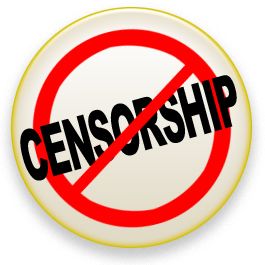
Monday, January 31, 2011
HPV FACTS:
Cervical cancer is not a major health issue for women under good gynecological care.
HPV vaccines may protect against four strains of high-risk HPV but the duration of effectiveness is not clear; best estimates to date are from 4 to 6 years
HPV vaccination does not eliminate the need for traditional cervical cancer screening
Prior exposure to vaccine-relevant strains of HPV can increase the risk of cancer by 44.6% if injected with
Gardasil and 32.5% if injected with Cervarix
HPV is not transmitted solely via sexual contact, there are multiple other ways to have been exposed
There are already 278 reports to VAERS of abnormal pap smears post-vaccination
HPV does not cause cervical cancer, it is the persistent infection, not the virus, that determines the risk.
93% of women initially infected with a particular strain of HPV will not show the same strain four menstrual cycles later.
The original studies to determine HPV type prevalence had been done with self-collected specimens by women in Costa Rica, a country with one of the highest cervical cancer rates in the world. These were the statistics used to market HPV vaccines to an American population where women have a 14 times greater chance of dying of digestive cancer than they do of cervical cancer.
Most cervical cancer deaths in the United States, and developed countries, are people who are not under regular OB/GYN care.
The National Cancer Institute has no data on which HPV genotypes are prevalent in the United States.
A CDC study showed that HPV types 16 and 18, the two HPV vaccine-relevant strains, are NOT the prevalent types in American women.
Three published papers on HPV prevalence in the U.S., indicated that types 62, 84 and 52 are the most prevalent. These are all classified as high-risk strains, none of which are targeted in either approved HPV vaccine.
If a person has prior exposure to vaccine-relevant HPV prior to injection, the vaccine provides no benefit, but does provide potential risks.
If a woman is infected with HPV-18 in January, HPV-18 in July, and HPV-31 in December, her cancer risk is zero. Even though these are all high risk types, they are considered transient. It takes repeated infection by the same type to perhaps pose a risk of cervical cancer.
Even when a woman has persistent infection by the same type, if her lifestyle is healthy (she does not smoke, does not take oral contraceptives, does not have multiple sexual partners, does not have a compromised immune system) her risk of cervical cancer is still minimal.
HPV is not necessarily a sexually transmittable virus–you can get it other ways.
American women currently spend $10 billion on unnecessary colposcopies (cervical biopsies) every year, primarily because the currently used HPV tests frequently display false positive results.
A study conducted by Harvard Medical School estimated that 95% of cervical biopsies in the United States are not necessary.
If a young woman is considering taking an HPV vaccine, it is critical that she know if she has been exposed to HPV, and if so, what genotype.
Nothing has been proven to be more effective at controlling cervical cancer than pap smear technology.
So why do HPV vaccine manufacturers, the CDC, and the National Cancer Institute tell physicians not to screen for HPV exposure prior to vaccination? Unfortunately for young women and children around the world, the answer appears to be abundantly clear.
Posted by ed. dickau at 5:30 PM
Saturday, January 29, 2011
Friday, January 21, 2011
Thursday, January 20, 2011
Fifty Years Ago Today There Was Another Moment Of Hope!
John Fitzgerald Kennedy
Posted by ed. dickau at 7:33 AM
Wednesday, January 19, 2011
Tuesday, January 18, 2011
Getting a hairdryer through customs...
; color: blue; ">
Posted by ed. dickau at 6:12 AM
Monday, January 17, 2011
Sunday, January 16, 2011
| "When plunder becomes a way of life for a group of men, they create for themselves, in the course of time, a legal system that authorizes it, and a moral code that glorifies it.” – Political economist Frederic Bastiat, The Law [1850] “I used to think of Wall Street as a financial center. I now think of it as a crime scene.” – Filmmaker Danny Schecter, Plunder (2009) |
Posted by ed. dickau at 7:07 AM
| "When plunder becomes a way of life for a group of men, they create for themselves, in the course of time, a legal system that authorizes it, and a moral code that glorifies it.” – Political economist Frederic Bastiat, The Law [1850] “I used to think of Wall Street as a financial center. I now think of it as a crime scene.” – Filmmaker Danny Schecter, Plunder (2009) |
Posted by ed. dickau at 5:55 AM
Subscribe to:
Posts (Atom)
























